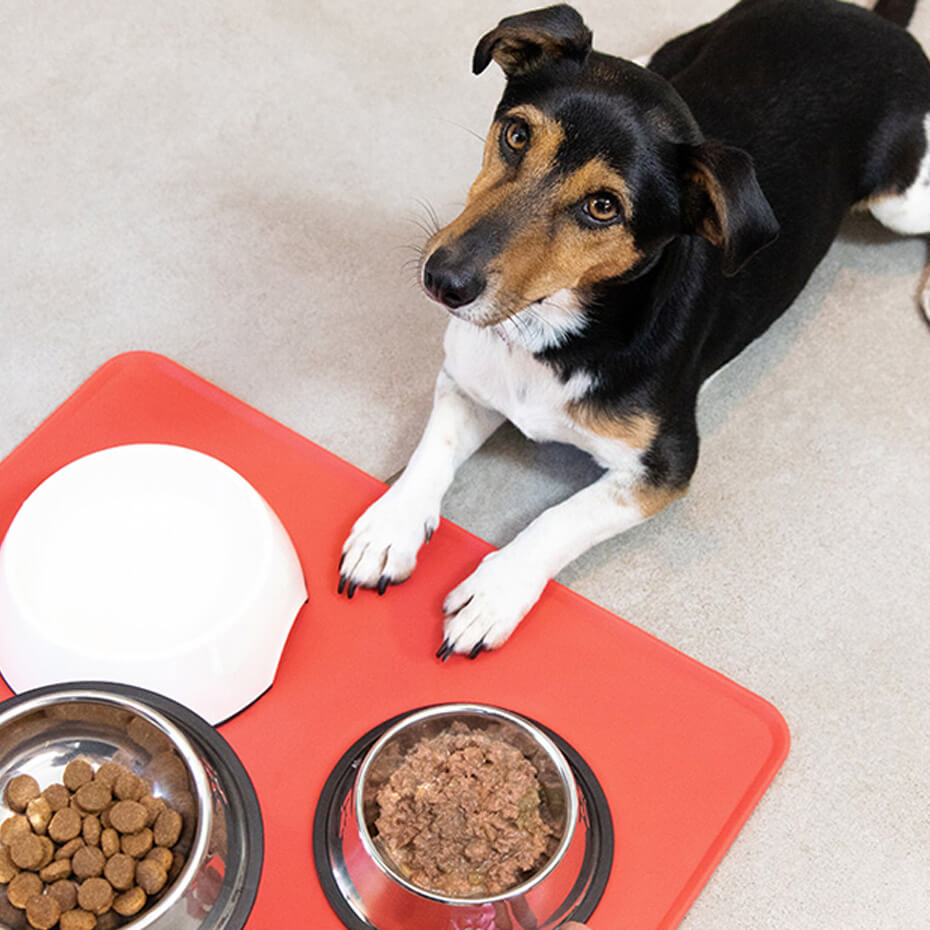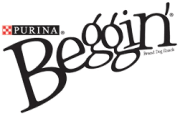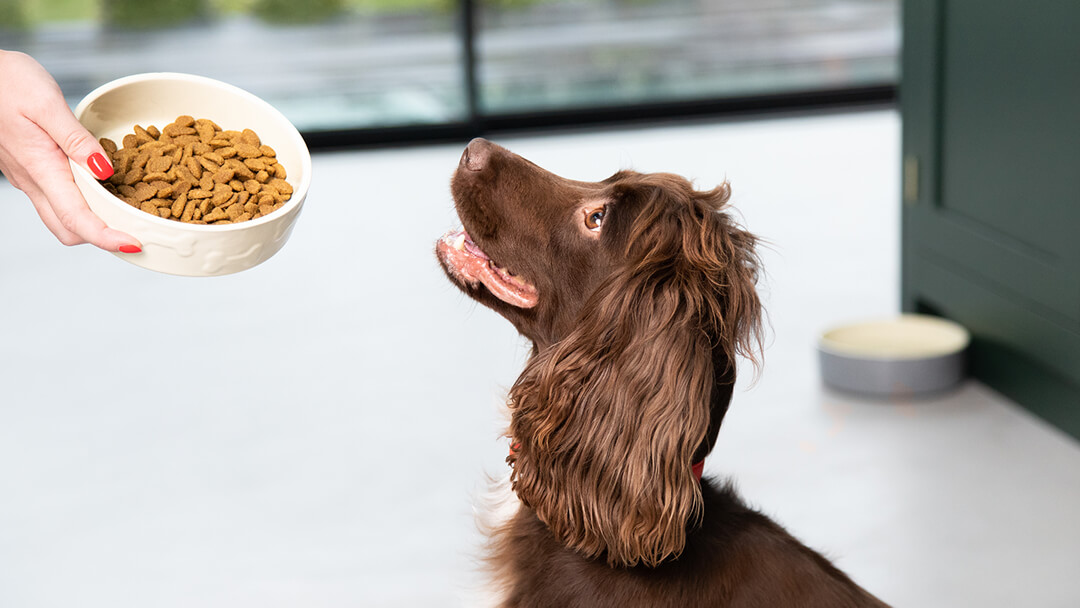
When choosing a food for your pet, it’s important to consider many factors, from your dog’s age to his size to any special dietary needs he might have – and that’s just the beginning.
Consider Your Dog's Life Stage
Puppy
At this key developmental stage in a dog’s life, your pet needs special nutrient blends that include DHA to support proper vision and brain development.
Adult Dog
Our foods contain nutrient and energy levels designed to help keep your dog in ideal body condition when fed properly, with a glossy coat and plenty of energy.
Senior Dog
Your senior dog may require a special nutrient formula to maintain lean body mass and help keep his mind bright
Feeding Adult Dogs
A balanced diet is essential in full-grown dogs to ensure they remain in peak health and condition.
What a Dog Needs
Once your dog reaches maturity, it’s time to settle into a regular feeding routine. To maintain an optimal body condition, your dog’s diet needs to include the right balance of the six major nutrient groups:
- Proteins;
- Fats and oils;
- Minerals;
- Vitamins;
- Carbohydrates;
- Water.
Any good-quality, manufactured, complete pet food should provide your dog with this basic nutritional balance. Whether you serve canned or dry, or a mixture of the two, is really a matter of personal preference – yours, and your dog’s!

Specific Needs
Advances in pet nutrition mean there is now a wide range of commercially produced dog foods designed to match more accurately your dog’s specific needs.
Note, however, that breed and size can make a difference. Smaller breeds have a faster metabolism, needing more calories every day. Larger breeds, as well as having larger appetites, benefit from a different mix of minerals and vitamins to support fragile joints and cartilage.
If your dog is particularly active you might consider a specially formulated ‘active’ diet. This will provide higher levels of fat, protein and vitamins such as B12 to help release the energy from food. Less active dogs require less fat, so feeding a ‘light’ formula will help to avoid weight gain.
Some dogs develop sensitivities or allergies to food groups. Your vet can recommend an alternative formula to help. Special diets are also available to treat certain health conditions or aid recovery.
But unless your dog’s circumstances change dramatically, there is no reason to break your regular feeding routine from the early days of adulthood at 12 to 24 months, to the end of the sixth year.
Feeding Large Breed Dogs
Big dogs have big appetites, but they also have slower metabolisms than their smaller cousins, so they require fewer calories and less fat from their food to maintain a healthy, lean body condition.
At the same time, bigger breeds need to develop and support a large, strong skeletal system and powerful joints, which means an additional requirement for minerals like calcium and phosphorus. It’s particularly important not to over-feed large and giant breed dogs, not just because of the usual health problems that result for all dogs, but also because if their weight outstrips the ability of their frame to support it, there’s a real risk of deformities, especially during their youth.
Specially prepared large-breed formulas have larger, more satisfying kibbles to encourage big dogs to chew for longer, slowing the rate of eating and helping them get the most out of their food – as well reducing the temptation to over-feed. Reduced fat content takes into account their slower metabolism and helps control weight gain and minimise the impact on joints and other vital organs. Nutrients associated with the synthesis and repair of the joints are in good supply.

How Much Energy Does Your Dog Actually Need?
Dogs’ energy levels vary greatly. For example, a toy dog living in an apartment requires a lot fewer calories than a farm dog who spends the day playing and running outside. Remember, it’s important to consider your dog’s size, breed, age and activity level when determining his daily caloric needs.
All of our foods come with feeding instructions to help you properly feed your dog depending on his size, but certain types of dogs may require specialised foods to help them maintain an ideal body condition. Consult your veterinarian if you have concerns about your dog’s diet.
Reading a Pet Food Label
Unsure what to look for when reading a pet food label? Read our comprehensive guide to understand just what you’re looking at.
Navigating the countless options in the pet food section of your favourite store can be confusing. Here’s a quick guide to help you get started in making informed decisions when selecting the food that’s right for your pet.
The label on pet food usually contains the following information:
Overview
This section contains a branded name, like DOG CHOW, along with an indication of the primary ingredient or a formula name such as chicken and rice.
Net weight statement
This indicates how much food is contained in the bag or can.
Manufacturer's name and address
This provides the manufacturer’s details.
Ingredient list
Just like human food, the ingredients are listed in descending order of content weight.
Further down the list, you’ll see many scientific names that correspond to vitamins and minerals.
Guaranteed analysis
AAFCO Guidelines recommend a minimum level of certain nutrients. The guaranteed analysis shows the pet food’s minimum or maximum of essential nutrients.
Nutritional adequacy statement
To substantiate claims, pet food must be complete and balanced to meet or exceed the standards of an established profile, or be proven to meet certain nutritional recommendations.
Feeding directions
Follow these instructions to determine how much food to feed your pet each day. These are just guidelines, and you may need to increase or decrease the amount of food you feed to help maintain your pet’s ideal body condition.
Calorie statement
This is expressed on a kilocalorie per kilogram basis. It may also be expressed as a common unit of measure, such as kilocalories per cup. This information will help you get a handle on the differences between dry pet food brands.
Other label claims
It’s important to know how to navigate the information contained in a pet food label. Just know that any time you choose a complete pet food from Purina, you can be confident you’ve selected a pet food that provides complete and balanced nutrition.









